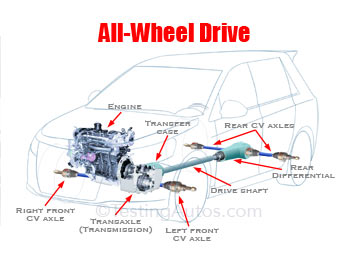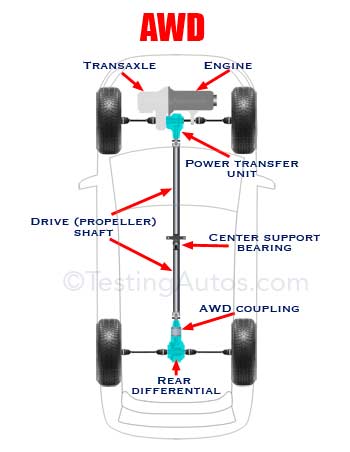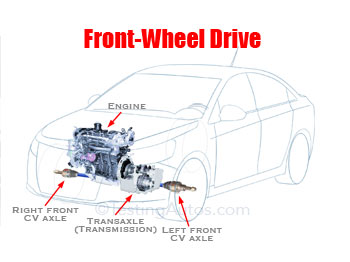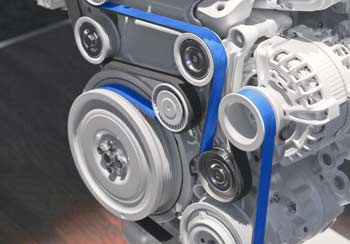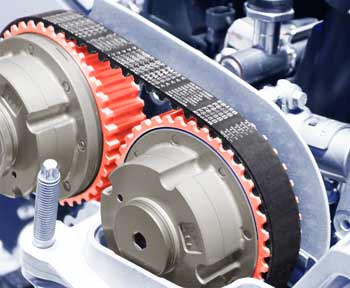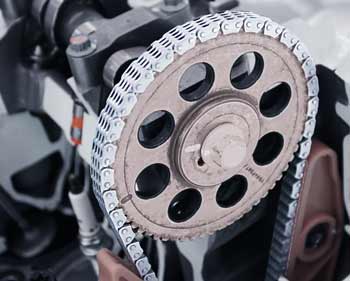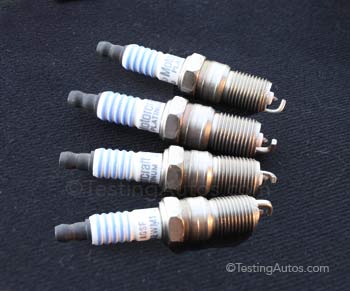Are AWD cars more expensive to maintain than FWD?
Updated: November 05, 2022
The short answer is yes, an all-wheel drive vehicle is more expensive to maintain for one simple reason: an AWD vehicle has more components. If you compare a small front-wheel drive car to a similar all-wheel drive car, crossover or SUV, the difference in maintenance costs will be smaller when the vehicle is new, but will grow as the vehicle ages. The risk of expensive repairs at higher mileage is also higher in all-wheel drive vehicles compared to similar front wheel drive cars.To compare apples to apples, let's look at two similar vehicles, one with FWD and the other with AWD. We picked a front-wheel drive Nissan Altima sedan and an all-wheel drive Nissan Rogue compact SUV, both of the same model year, equipped with the same 4-cylinder engine.
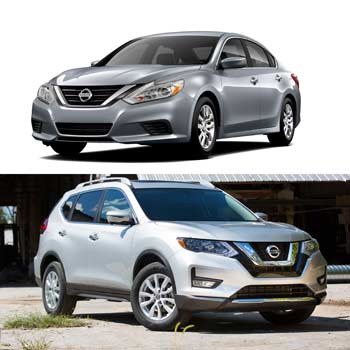 2018 Nissan Altima and Nissan Rogue. Photo courtesy of Nissan North America.
2018 Nissan Altima and Nissan Rogue. Photo courtesy of Nissan North America.According to EPA estimates, the AWD Rogue will cost around $150 more a year in fuel, if driving 15,000 miles a year. We suspect in real life, this number will be a bit higher, but it's not a huge difference.
What about regular maintenance? The price for oil changes is the same.The price for an all-around brake job is almost the same. The cost for the wheel alignment, air filter, drive belt or spark plug replacement is roughly the same for either vehicle. However, a set of tires for the Rogue (they are larger) will cost about $200 more. Tires are usually replaced every three-four years assuming you're driving an average of 15,000 miles per year.
The Rogue AWD system has a small power transfer unit (transfer case) and a rear differential, see the diagram.
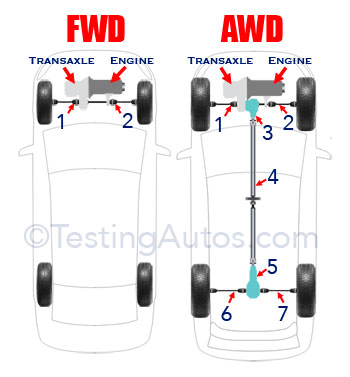 FWD and AWD mechanical components: 1. 2. Front CV axles. 3. Transfer case (unit). 4. Drive (propeller) shaft. 5. Rear differential. 6. 7. Rear CV axles.
FWD and AWD mechanical components: 1. 2. Front CV axles. 3. Transfer case (unit). 4. Drive (propeller) shaft. 5. Rear differential. 6. 7. Rear CV axles. Replacing the fluid (gear oil) in both components will cost $200-$300. The Rogue AWD system also has a driveshaft (prop shaft) that transfers the power to the rear differential and two more CV axles at the back, but they don't need any maintenance.
All in all, the AWD Rogue will cost at least $600 more in fuel, plus another $400-$500 in maintenance over the first four years. Considering the benefits of the AWD, it's reasonable. However, in an all-wheel drive vehicle the cost of repairs will increase significantly at higher mileage if some of the AWD components fail.
The proven reality of the automotive world that we see is the more complicated the car is, the more chances that something will go wrong. In addition, some of the common repairs, such as rear wheel bearing replacement, will also cost more in an AWD vehicle due to extra labor.
How a simple On-demand AWD system works:
The majority of modern small and mid-size non-luxury SUVs and crossovers use variations of a simple, lightweight and effective all-wheel drive system. Within the industry, this type of all-wheel drive is known as on-demand AWD, as defined by SAE International, which is a global authority in automotive standards. Of course, car makers don't call their systems on-demand AWD, but use their own marketing names for their AWD systems. What is the difference between front-wheel drive and this type of all-wheel drive?Many modern popular small and mid-size crossovers and SUVs offer an automatic on-demand AWD system built on a front-wheel drive platform (front-biased AWD). In an AWD system like this, front wheels are powered at all times. The computer that controls the AWD system monitors driving conditions and sends some of the engine power to the rear wheels as needed. Read more technical details below.
On-demand all-wheel drive Pros and Cons: The advantage of an on-demand AWD system is that it's simple, works automatically and can be used on any surface. Together with good tires, it offers better traction on slippery roads and when accelerating, as well as when driving in moderate off-road conditions.
All-wheel drive vehicles have more even weight distribution, because some heavy parts are located at the back. A more even weight distribution together with all-wheel drive often results in better handling. An all-wheel drive vehicle is easier to control under hard acceleration. Having an all-wheel drive also provides some advantage if you use the vehicle for towing a heavy trailer.
Of course, all-wheel drive has very little effect on braking and can only be effective if you have good matching tires suitable for the season.
Drawbacks include heavier weight, higher fuel and maintenance costs and a greater chance of expensive repairs, especially as the vehicle gets older. Often, all-wheel drive vehicles also have larger tires than front-wheel drive cars. Larger tires cost more to replace. In addition, it's important for the all-wheel drive system to have all four tires of the same size, because even the difference in air pressure or tread wear between tires adds load to the AWD system.
How a front-wheel drive works:
In a front-wheel drive car, the engine power is sent only to the front wheels; read more technical details below. The front-wheel drive works well in the majority of driving situations, since most of the weight is over the front wheels and, as a result, front tires have good traction. Thanks to its simplicity and practicality, front-wheel drive is the most widely used drivetrain layout in the world.Front-wheel drive Pros and Cons: Compared to all-wheel drive, advantages of a front-wheel drive include: simplicity, lighter weight, better fuel economy, lower price and maintenance costs. Front-wheel drive cars are typically easier to work on and less likely to require expensive drivetrain repairs, especially at higher mileage. In many front-wheel drive cars, the rear seat floor is almost flat, because there is no need to accommodate the driveshaft for the rear axle.
The disadvantage is that a front-wheel drive car will have less traction than an all-wheel drive vehicle in slippery conditions, under hard acceleration or when driving off-road. Another drawback that is common in sporty front-wheel drive cars with a powerful engine is known as torque steer. This is when the vehicle pulls to the right or left under hard acceleration.
Is AWD better in snow? In general, yes, but a lot depends on tires and many other details. Here is a little personal story to illustrate: The snowstorm just passed. We are at the foot of the steep uphill road leading to the ski resort. Several AWD wagons and SUVs are spinning their wheels, but going nowhere. The temperature is just above the freezing point; this is when the snow is the most slippery. Suddenly, the white Toyota Camry (The Camry has front wheel drive!) appears out of nowhere, navigates around stuck cars and continues up the snowy hill like nothing happened. The astonished look on people's faces says it all.
Later, we are talking to the owner of the Camry. It's a V6 front-wheel drive Toyota Camry with good winter tires. The owner is an experienced driver. He said that the key to not getting stuck in the snow is to drive at a smooth, steady pace. The weight of the heavy V6 engine over the front drive wheels allows tires to dig into the loose snow. This gives the front-wheel drive car enough traction to not get stuck. It just goes to show that simply having an AWD is not enough. Driving skills and good tires are important. A heavy V6 engine also helps improve traction of the front drive wheels.
Technical difference between FWD and on-demand AWD: To better understand the technical difference, we created this diagram. In front-wheel drive, the open differential located inside the transaxle distributes the rotating torque to the front wheels via left and right CV axles, indicated by the "1" and "2" in the image.
 FWD and AWD mechanical components: 1. 2. Front CV axles. 3. Transfer case (unit). 4. Drive (propeller) shaft. 5. Rear differential. 6. 7. Rear CV axles.
FWD and AWD mechanical components: 1. 2. Front CV axles. 3. Transfer case (unit). 4. Drive (propeller) shaft. 5. Rear differential. 6. 7. Rear CV axles. The right image shows a simple front-biased on-demand AWD system. In addition to the front-wheel drive components, the on-demand AWD system has a device called a transfer case or transfer unit ("3" in the image). The transfer unit is attached to the back of the transaxle. The transfer unit (see the photo) is a simple mechanical device with a few gears inside. It angles the rotating torque towards the rear axle and provides the output for the driveshaft (propeller shaft) connected to the rear axle. The main component of the rear axle is the rear differential; see the photo. It has an electronically controlled clutch pack (coupling) that can engage or disengage the rear axle. Rear CV axles "6" and "7" transfer the rotating torque to the rear wheels. In terms of maintenance, only the power transfer unit and the rear differential need regular fluid changes; other components need regular inspection, but will need to be replaced if worn out.
